It’s a slow movie, granted, but Barry Lyndon is lovely to look at, to sink into and to soak up. It’s a 3-hour 18th century bath, made with complete care. Music, visuals, scene-development, plot and camera movement blend together like a ballet (no I’m not into ballet either). I know that might sound like a stuffy sketch of almost any movie, but here it’s different.
.
For example, take the duel scene from early in the movie (no spoilers)
*** You need to TURN IT UP to properly hear the music -the music *must* be clearly heard here. ***
…you could say it’s a duel, one guy gets shot and the other has to run away to Dublin. The end.
But -taken from the start… close-up of the guns is like a painting…
Camera begins pulling back as the thrumming music begins.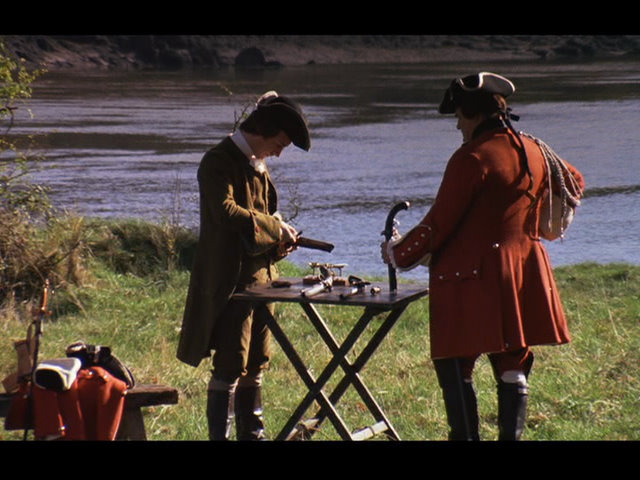 Two ‘seconds’, perfectly framed. Look at the action in the stances. In the scene itself they’re barely moving, but we can feel the weight of fate bearing down on all the participants by the way they stand and how the shot is framed. The thrumming music is the icing on the cake.
Two ‘seconds’, perfectly framed. Look at the action in the stances. In the scene itself they’re barely moving, but we can feel the weight of fate bearing down on all the participants by the way they stand and how the shot is framed. The thrumming music is the icing on the cake.
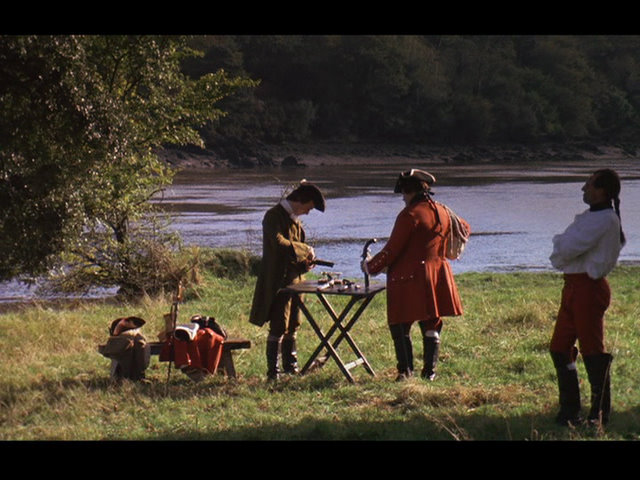 All the way back we notice new bits of the ‘painting’ -look at everyone’s stance -perfect! Each time something new is introduced to this scene you could think to yourself “that is a perfectly framed picture!
All the way back we notice new bits of the ‘painting’ -look at everyone’s stance -perfect! Each time something new is introduced to this scene you could think to yourself “that is a perfectly framed picture!
.
Then something else is added.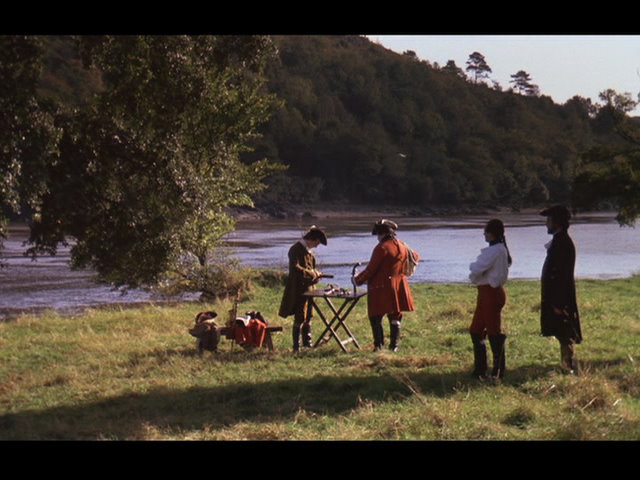 Look at this new guy -the only person in almost-silhouette. The hat, the ruffle, the long coat, the imposing deathlike shadowy stillness standing behind the guy who is possibly about to be killed. Is this a foreshadow of what’s in store for Captain Quinn?
Look at this new guy -the only person in almost-silhouette. The hat, the ruffle, the long coat, the imposing deathlike shadowy stillness standing behind the guy who is possibly about to be killed. Is this a foreshadow of what’s in store for Captain Quinn?
.
And something else is added to the tale -the reason why all of the above are where they are, doing what they must do…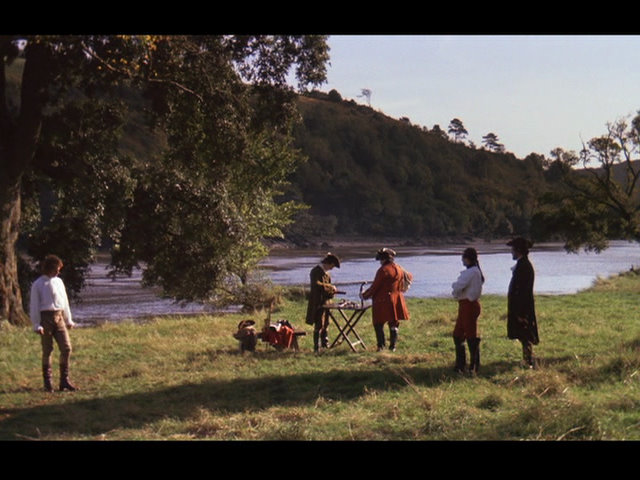
Each new character brings a new look, fleshing out the (visual) story being told.
.
But *STOP THE LIGHTS* there’s even more to come!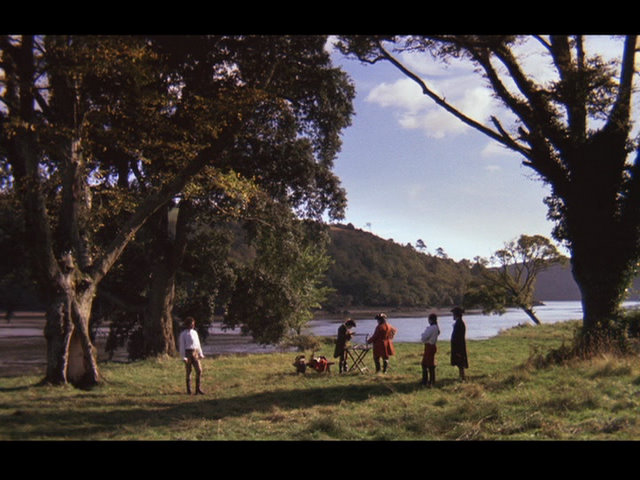 Now smack my bottom and call me a taxi if that’s not a perfect image, perfectly capturing the mood of the scene in one still shot -as well as being representative of the era (or at least how we would collectively imagine such a scene in such an era to have looked -romanticised as in a great painting of the era of course).
Now smack my bottom and call me a taxi if that’s not a perfect image, perfectly capturing the mood of the scene in one still shot -as well as being representative of the era (or at least how we would collectively imagine such a scene in such an era to have looked -romanticised as in a great painting of the era of course).
Capture the image, print and stick it on the wall.
The music thrums along -when will it change?
Cut to a medium-shot of ‘Reggie Perrin’ nervously inspecting his weapon, then trying to look firm and resolute as he waits to see what Barry has to say for himself. Is this young upstart really going to go ahead with this? he must be thinking to himself.
Finally he nods. While the attendant goes off to get Barry’s view, the beat changes -goes deeper.
This ‘deeper throb’ continues as Captain Grogan quietly urges him to put the whole sorry incident behind him.
“You are but a boy -and Quinn is willing to consider you as such…”
“..isn’t that right Quinn?”
.
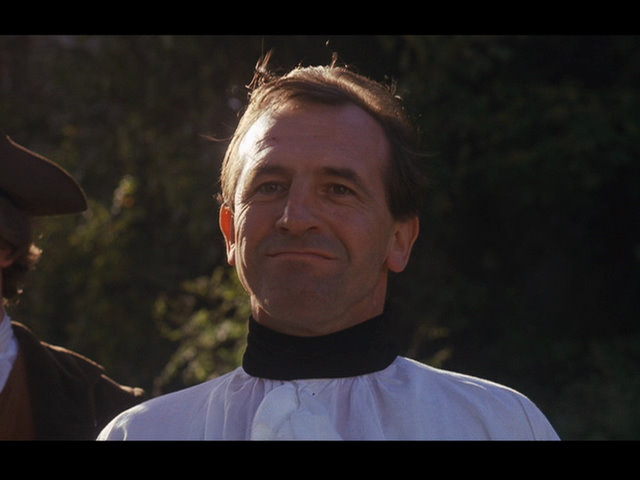 Quinn is barely able to reply. He grunts and nods, still trying to hide his fear behind an awkward rictus smile.
Quinn is barely able to reply. He grunts and nods, still trying to hide his fear behind an awkward rictus smile.
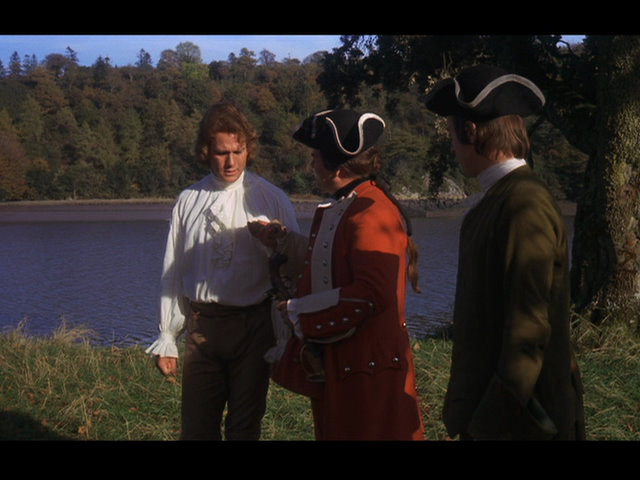 All eyes turn to Barry once again now. “Now Dublin’s a fine place -and if you’ve a mind to take a ride there and see the town for a month, here’s ten guineas at your service.”
All eyes turn to Barry once again now. “Now Dublin’s a fine place -and if you’ve a mind to take a ride there and see the town for a month, here’s ten guineas at your service.”
We can see Barry is tempted, lulled by Captain Grogan’s soft words, well-put to avoid any notion that he’d be running away through fear.
“Will that satisfy you Captain Quinn?”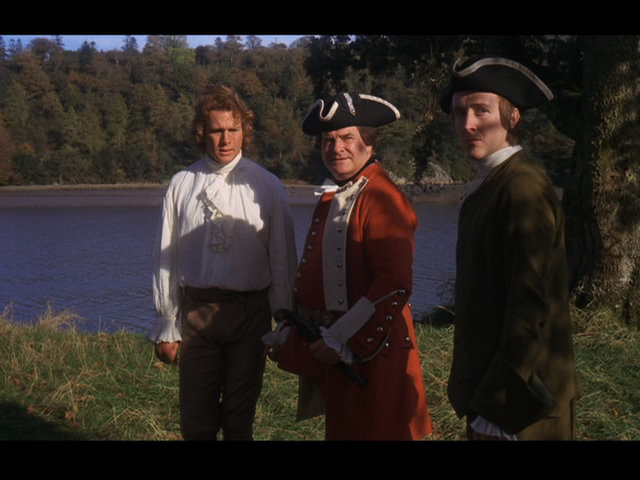 Captain Quinn is also taken-in by the compelling speech of Captain Grogan. The soft thrums in the soundtrack has also now massaged all of us into believing maybe Barry will be able to back-out without losing face.
Captain Quinn is also taken-in by the compelling speech of Captain Grogan. The soft thrums in the soundtrack has also now massaged all of us into believing maybe Barry will be able to back-out without losing face.
But Quinn can’t resist saying too much, insisting on an apology and that Barry “go to Dublin” as though at his command. Then he will consider the whole affair honourably settled.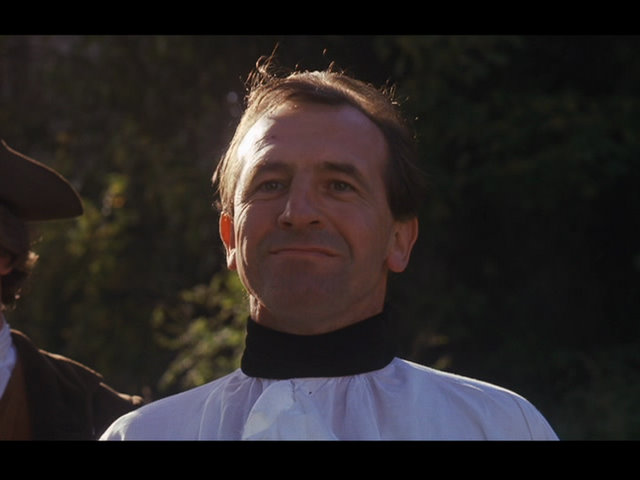 No longer is his face a frozen, nervous mask, but now it’s the proud sneer of smugness, certain of victory.
No longer is his face a frozen, nervous mask, but now it’s the proud sneer of smugness, certain of victory.
Surely Barry will fold?
Barry gives a final look to Captain Quinn to see into the eyes of the man he has come to duel with.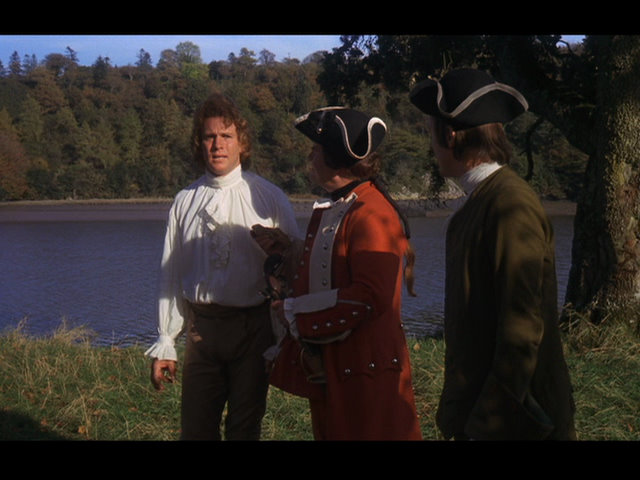
.
Here is that man, fully sure of himself now.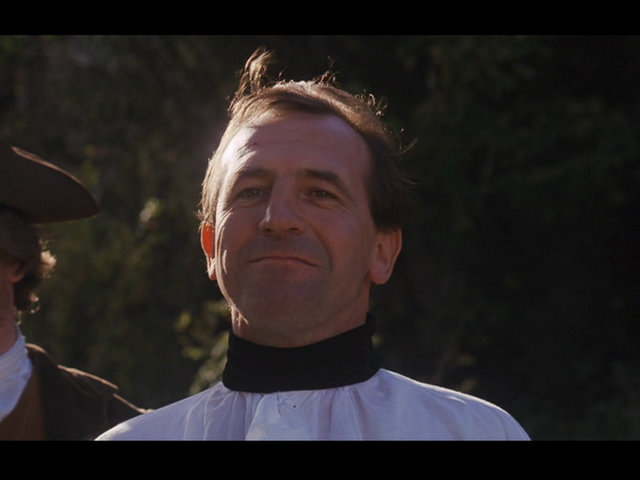 .
.
“I am not sorry,” says Barry while the camera holds on Quinn.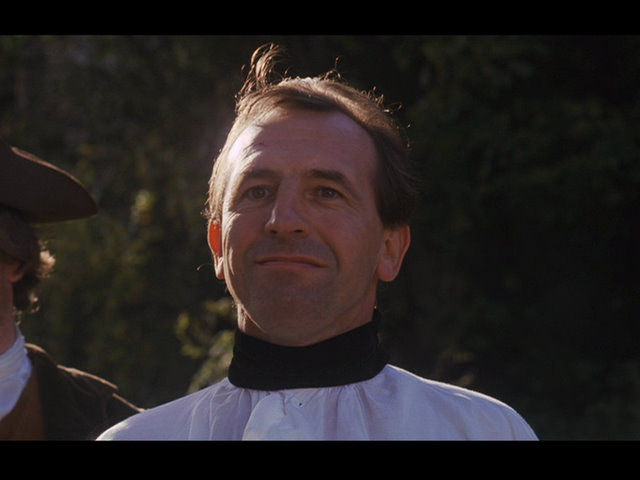
“and I’d as soon go to Dublin as to Hell.”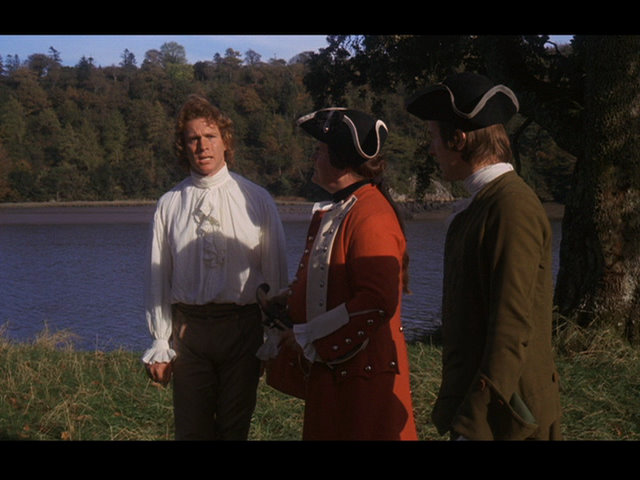 .
.
Quinn is gobsmacked.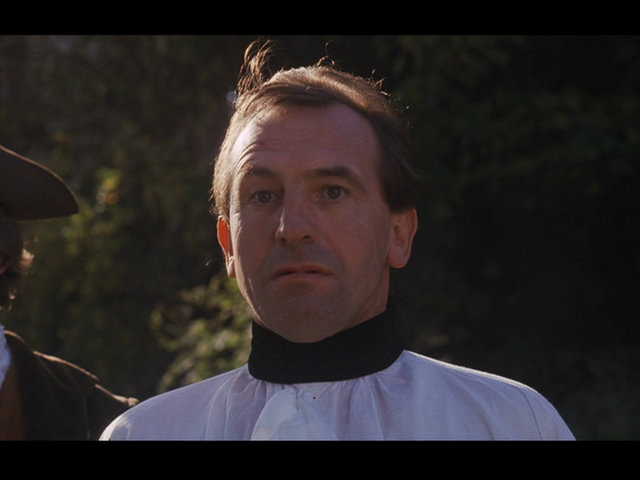 Later we will learn that it was all a ruse. The guns were stuffed with ‘a pluggit of tow’ (toe?). We can imagine Barry’s relations assuring Quinn the night before that they would convince their flighty cousin to take the money and run -that there would be no duel. Perhaps they didn’t bother telling him the guns would shoot something less lethal than ammo “just in case”? Now he is shocked. How has it come to this!? How can he get out of it!?
Later we will learn that it was all a ruse. The guns were stuffed with ‘a pluggit of tow’ (toe?). We can imagine Barry’s relations assuring Quinn the night before that they would convince their flighty cousin to take the money and run -that there would be no duel. Perhaps they didn’t bother telling him the guns would shoot something less lethal than ammo “just in case”? Now he is shocked. How has it come to this!? How can he get out of it!?
.
Now the music finally changes again -the violins come in, adding more tension. Everything is “fully committed” and there’s no going back. The music confirms it like a thrumming stamp on a great fat document of utmost importance.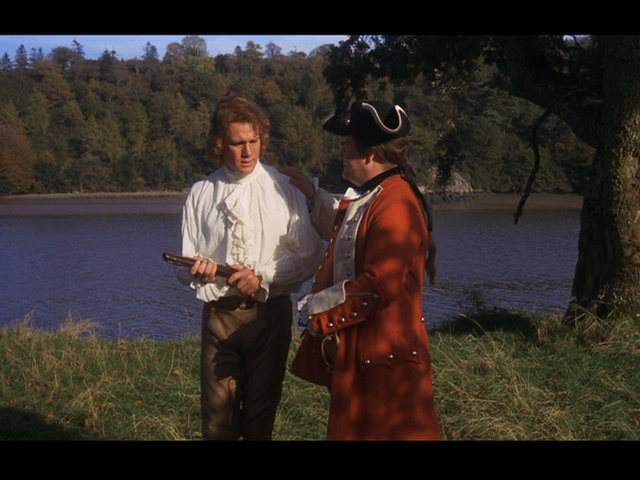 “Good luck m’boy”
“Good luck m’boy”
.
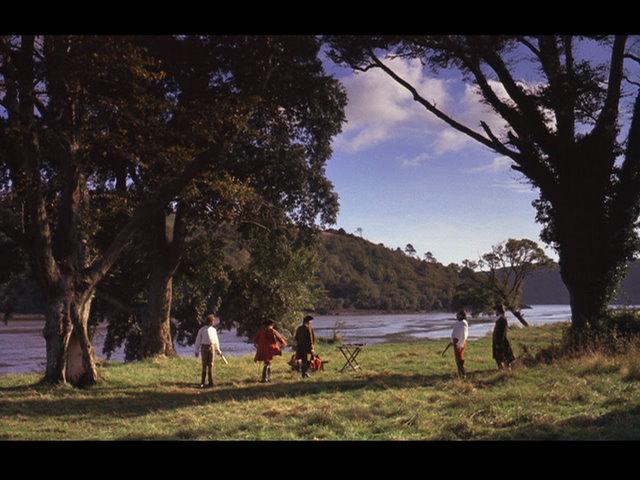 Again we go back to the ‘big duelling painting’ as the guns are raised. We see each duellist and can feel the absolute terror. The music is ploughing ahead to an inevitable conclusion. There is no going back now.
Again we go back to the ‘big duelling painting’ as the guns are raised. We see each duellist and can feel the absolute terror. The music is ploughing ahead to an inevitable conclusion. There is no going back now.
.
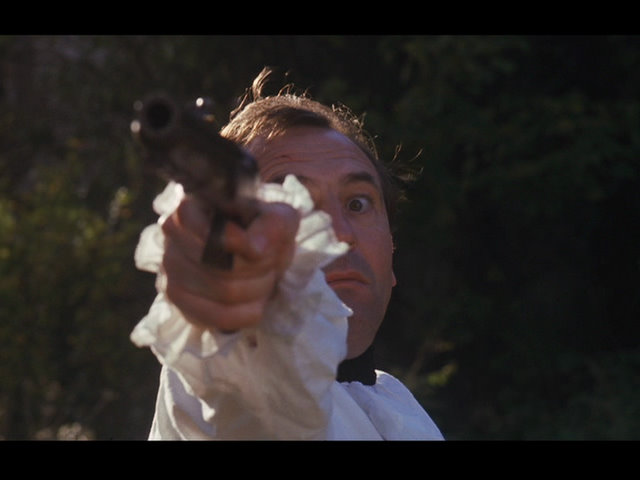 Reggie especially is bricking it. Can this really be happening, he is thinking. “Someone do something to get me out of this!”
Reggie especially is bricking it. Can this really be happening, he is thinking. “Someone do something to get me out of this!”
.
Barry is more resigned to his fate -he has no power over it so is content to play along. This is a key theme of the movie “Barry swept up by fate and playing it through no matter the consequences”. (The final words in the movie will be “It was in the reign of King George III that the aforesaid personages lived and quarreled; good or bad, handsome or ugly, rich or poor, they are all equal now.”)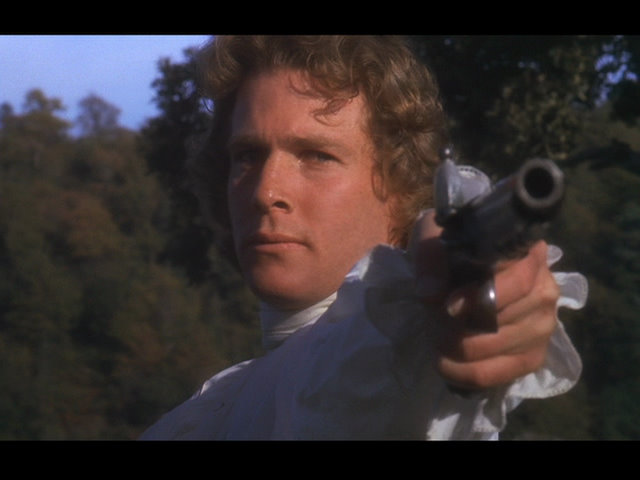 .
.
Finally shots are fired and Captain Quinn goes down.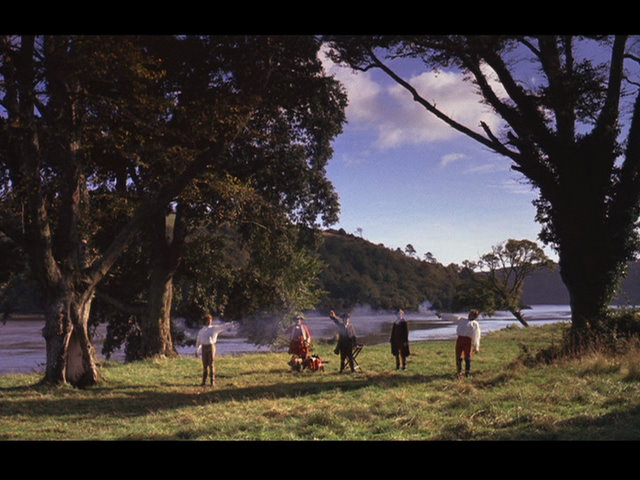
.
Harpsichord comes in to play through the consequences. The camera changes to behind the fallen man… Look at the scene as the three guys are bent over ‘dead Reggie’… Barry runs in, finds his spot perfectly and together they all almost come to a standstill to emphasise the “triangle of people” their bodies form -again reminiscent of many great and well-planned paintings.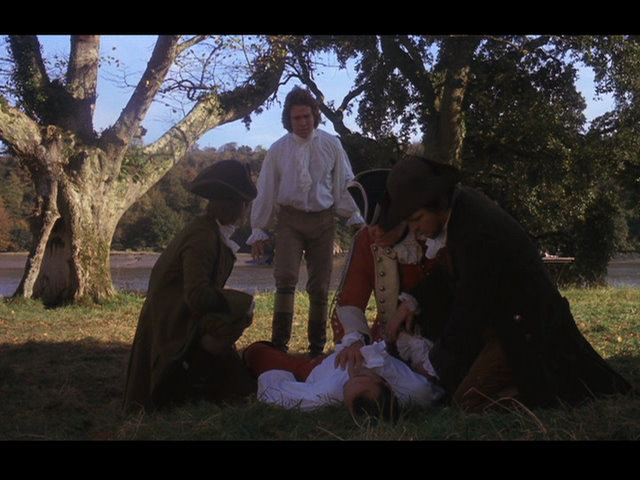
.
Here’s a painting by Raphael, famous for its triangular structure(s), among other things.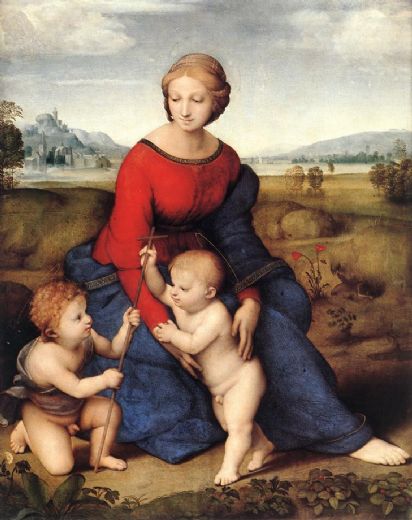
.
Now tell me Kubrick didn’t have such images in mind when he framed this shot.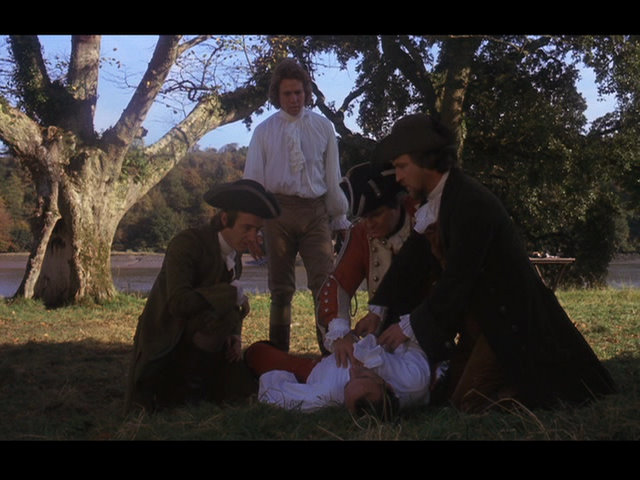
.
Even after Barry leaves the shot, the ‘triangle peak’ does not go away. The ‘leftside wall’ of the triangle goes with him and we’re left with a new and smaller triangle being completed by Captain Quinn’s bent knee.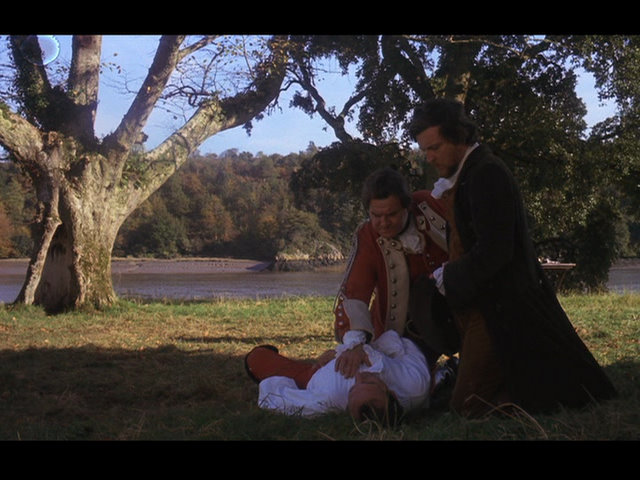
This is just one scene.
This is just how I see it. I’m sure I’ve missed lots/ could go on some more about it. Repeat all throughout the movie.
The pace is deliberate. Nobody is running off to catch a bus or to watch the latest episode of Eastenders on their iPhone as they sit in line at the passport office. There is no hustle & bustle of modern living, no hint of anything but the mid-to-late eighteenth century in which it is set. To truly see this movie you have to let yourself be transported to this time and this place.
And once you do, everything in this 3-hour-or-so ‘quiet epic’ is so perfectly, precisely and tightly-packed in place it defies criticism in my personal opinion.
OK, such ‘particularness’ is not for everyone. Sometimes in a movie it’s good to kick-out and “shoot what happens”, but still the level of care that makes up each & every moment of each & every scene in a Kubrick film –and Barry Lyndon in particular– is undeniable.
You can decide you don’t like it by all means, but you can’t refute its brilliance or legitimacy.
Barry Lyndon is not a slow movie where nothing happens. It’s a slow movie packed to the gills. Watch it just listening to the music and you’ll find many lovely and even funny nuances you may have missed otherwise. Watch it keeping an eye on the camera movements and you see it in a new way. Watch it to say to yourself “how many of these shots could you find on the wall of a great house or museum and it wouldn’t look out of place?”… if you were to pause it during each of these moments the movie would take days to get through.
Or you could watch it just for the story that is being told. It’s not a bad story. Quite interesting -where is it all going to lead? Even when you know the answer -and maybe only after you know the answer, the plot has many intricacies to give up that are discovered only on subsequent viewings.
To view Barry Lyndon with all of the above in mind is to witness a thing of rare beauty, seldom rivalled in the world of film.
You can say Ryan O’Neal is stunted, but he can give the right facial expression and stand ‘just-so’ for the painting that is being formed… and he’s not that bad anyway!
Anyway, this is why I love this movie and why I had to buy the Blu Ray release -EVEN MORE TO SEE!!
Incidentally, from loving the movie so much I decided to check out the book by William Thackeray. I’m happy to also give that a hearty clap on the back. It’s actually much funnier than the movie -mainly because it’s told from Barry’s point of view and many of the events in the film that are taken as truth are here deliberately more unbelievable. So when Barry tells us of, for example, the events of the duel with Captain Quinn we are doubtful that Barry did in fact go ahead with it -or if indeed there ever even was a duel or a Captain Quinn- but it doesn’t matter. Reading Barry Lyndon, the book, is like spending a very enjoyable and memorable series of afternoons with a genuine Irish character who is content to keep talking, telling you more and more unbelievable tales as long as you are content to call the pints. Great fun!
Kubrick has been criticised for not recognising this humour or point of view in the movie, but of course the only point of view Kubrick was interested in was Kubrick’s. As always, of course he wasn’t making a movie version of the book, but using the events in the book to tell his own tale. They are separate tales. I’ve often thought there’s room in this book for a rather good TV mini-series. This wouldn’t negate the film, but complement it with a completely different slant.
Some paintings by Gainsborough that reveal undoubted influence throughout the movie…
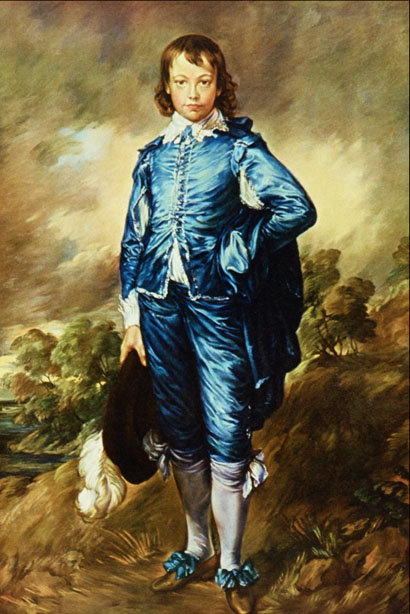 “I love the use of the colour blue by the artist”.
“I love the use of the colour blue by the artist”.
Barry’s inane comment was not made whilst viewing this, but the pose (and of course the wardrobe and setting) could almost be a freezeframe from this film. For instance, compare the somewhat-unusual stance here to Captain Grogan’s stance in the second still frame above. Movements and stances throughout this movie are at a poise and a pace suggested by such paintings, not by today’s (or 1975’s) predilections.
So this movie is not so much to be taken as “this is how it was”, but in keeping with the book, “this is how we view it through another person’s eyes” -in this case, through the eyes of a perhaps romantic, yet incisive and somewhat-pitiless artist. Like a poet conforming to the metre, style and tone that has been decided, Kubrick sets himself these parameters and doesn’t break them once throughout this long -and dare I say it?- perfect film.
– – – – – – – – – – – – – – – – – – – – – – – – – – – – – – – – – – – – – – – – – – – – – – – –
Update: I have since been to the location where this scene was shot. See here
– – – – – – – – – – – – – – – – – – – – – – – – – – – – – – – – – – – – – – – – – – – – – – – –
By the way, I hope you enjoyed this post.
This is not entirely a movie-site, but there are a few movie-related entries you might like to check out here.
.
.
.

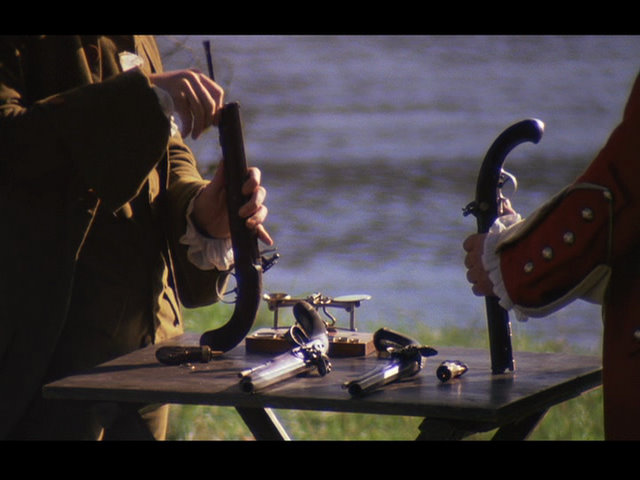
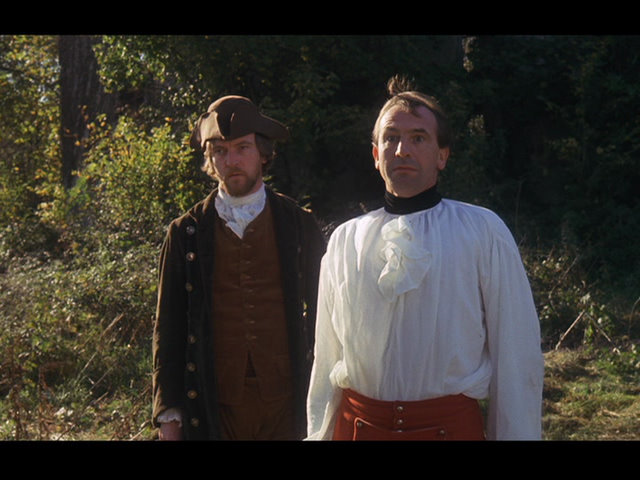
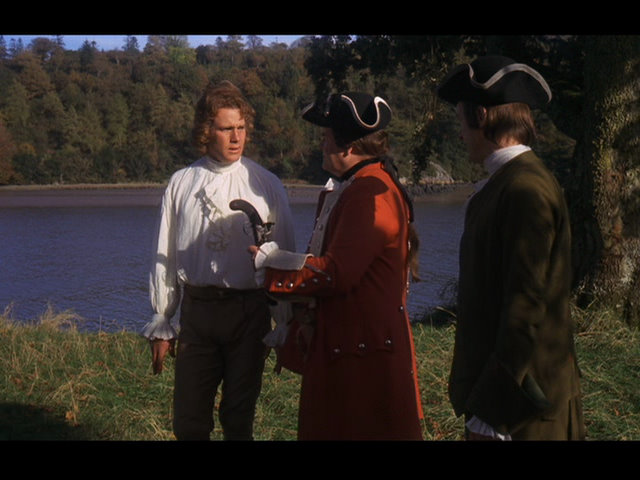
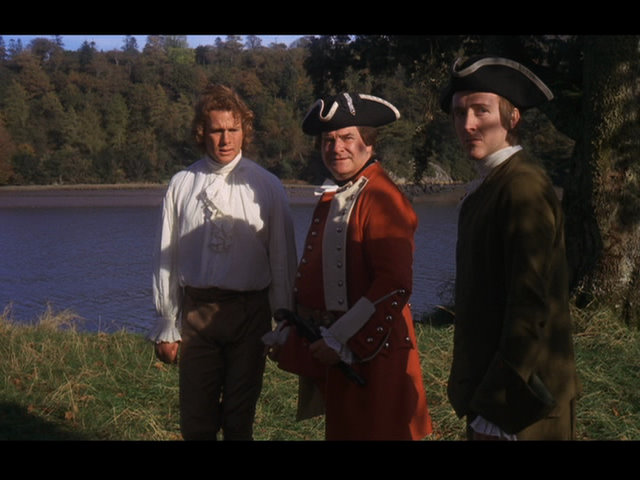
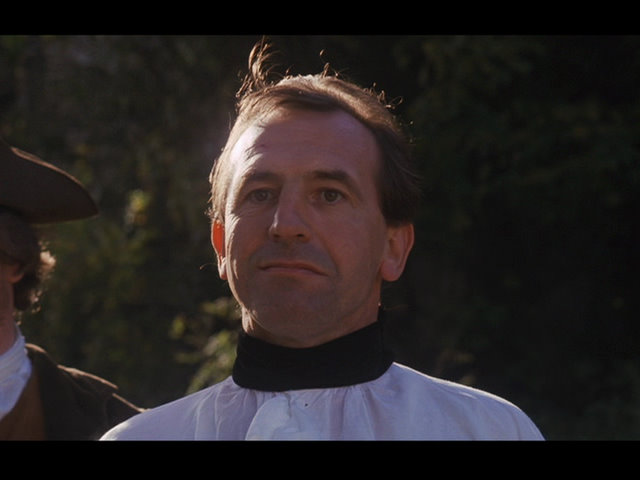
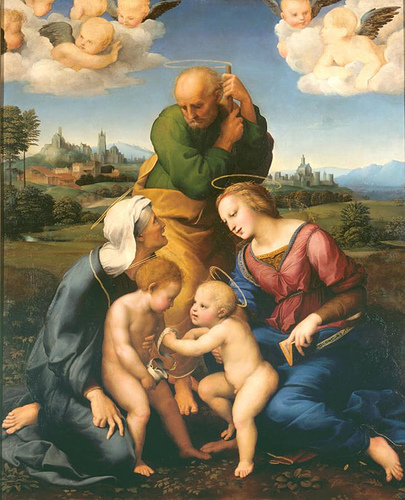

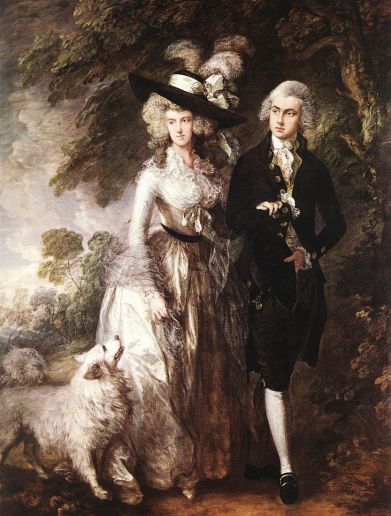
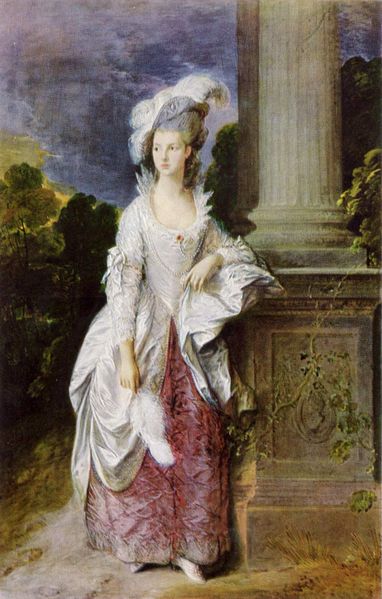
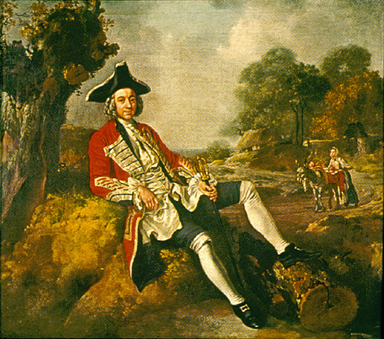


Terrific breakdown of just ONE scene. I saw ‘Barry Lyndon’ when it was first released & was immediatley captivated by its ‘pace’, rich colour (the boating scene when the small boat with the rich, red sail slowly drifts by in the background always sticks out in my mind), musical score, scenery (the ‘highway’ robbery) & incredible detail. It has been & continues to remain my all time favourite film.
Lol, the only drawback? Casting Ryan O’Neil in the lead. The only actor more “wooden” than O’Neil would have to be ‘Spiderman’ Toby McGuire . To be fair, I will watch out for the facial expression(s) you’d mentioned O’Neil shows next time I watch it.
Again, great piece & a wonderful one on the actual location of the duelling scene. I am at a wedding in Killarny in June & flying into Cork so will see if my wife & I can detour there before we drive to Killarny.
Best wishes, Frank (Alberta, Canada)